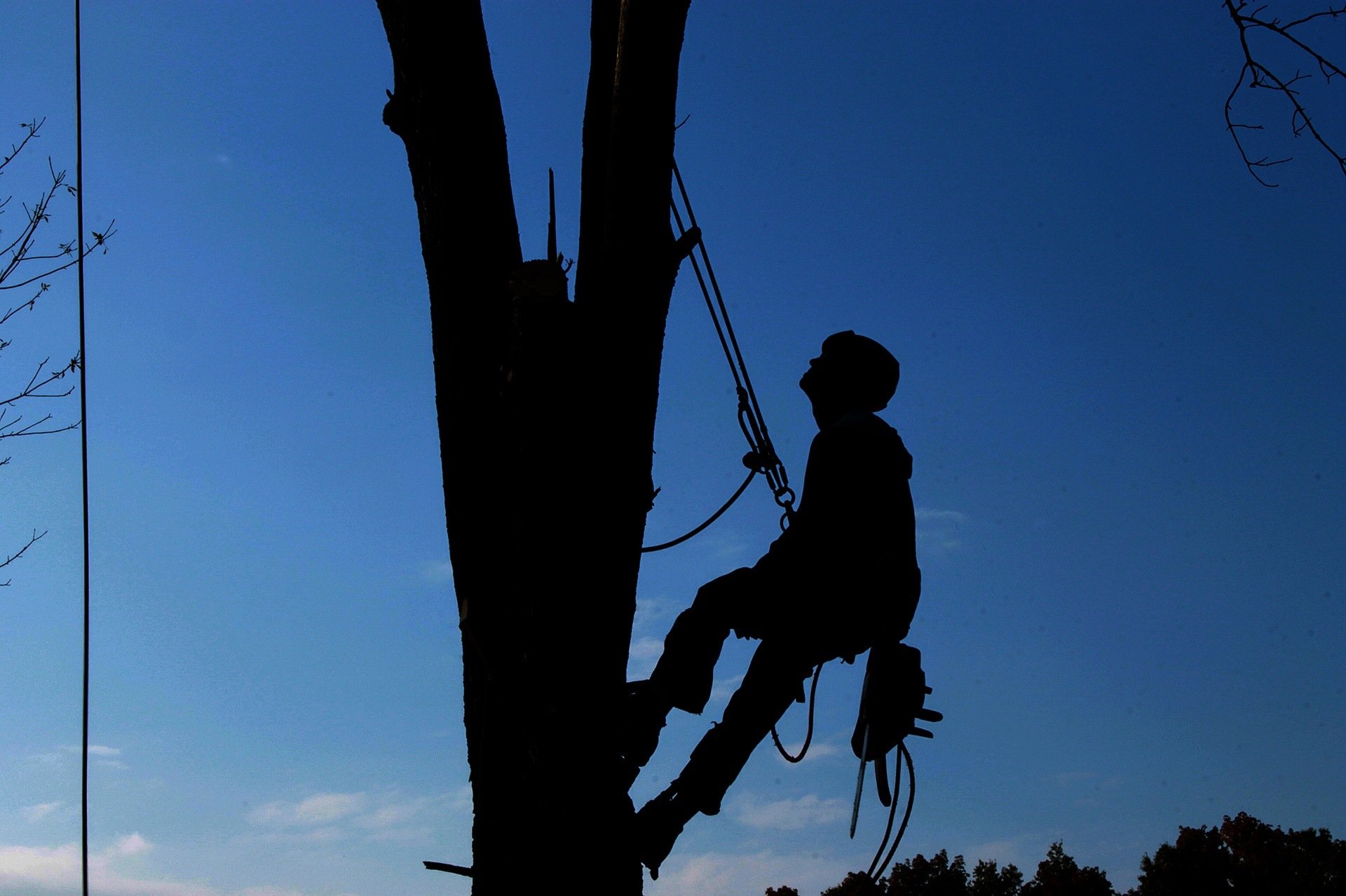 Why is it necessary to trim trees?
Why is it necessary to trim trees?
The PUD is currently in the process of trimming and pruning trees within the right-of-way. This includes trees and shrubs that are interfering with overhead conductors (power lines) and/or pad-mounted transformers that are a hazard to PUD infrastructure.
To provide SAFE and RELIABLE electricity service to our ratepayers, we seek to provide a minimum of 10' to 15’ (depends on line voltage and type of tree) clearance from overhead conductors. In some cases, trees will be trimmed heavily.
Where feasible and necessary, we will seek to remove fast-growing or hazardous trees from under powerlines. Tree removal candidates include the following:
Fast-growing trees that interfere with primary conductors.
Deciduous trees that require excessive trimming.
Dead, dying, diseased or defective trees have a high probability of falling and contacting primary conductors.
Trees with tree houses or climbable trees in close proximity to transmission or primary conductors at or near homes, schools, parks, or any other locations where people frequently visit.
Naturally seeded trees or smaller trees that will eventually interfere with primary conductors.
All wood will be removed from the site unless otherwise specified by the owner. Asplundh Tree Experts use modern arboriculture methods to trim trees. They include:
Techniques consistent with the practice of natural, lateral, and drop-crotch trimming shall be utilized
Cuts are made back to a main stem or branch of sufficient size.
All trimming cuts shall be made to direct future growth sprouting away from conductors.
Conifers should be trimmed in a manner that allows them to retain as much of their natural shape as possible.
All dead branches overhanging primary conductors at any height shall be removed.
Where practical, cuts should be primarily restricted to large diameter branches made well within the crown.
Remove living branches by making cuts as close as possible to the branch collar. Remove dead branches by making cuts as close as possible to the living tissue remaining at the base of the branch.
Avoid stripping or tearing of bark when cutting large limbs.
- Hazard Tree Description

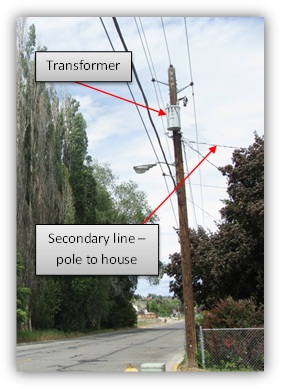 Stop Picture from expanding past this point
Stop Picture from expanding past this pointThere are two kinds of “power lines” on our power poles, and the difference between the two will determine what trees Okanogan County PUD trims and what trees the customer is responsible to trim. The first type is PRIMARY high-voltage overhead distribution, typically 7,620-13,200 volt aluminum/steel reinforced conductors located at the “top” of the poles and connected by insulators. Trees interfering with primary power lines are a hazard and can only be trimmed or removed by Okanogan County PUD crews. The second type is what we call SECONDARY lines, the 120-240 volt insulated, duplex or triplex lines that extend from the transformer to your house, shop or business. Trees interfering with secondary lines will NOT be trimmed by Okanogan County PUD tree trimming crews, as it is the customer’s responsibility to maintain secondary lines. Most of the time, secondary lines extend across fences, pools, play houses, dog houses, gardens, garages, backyards and numerous other hard to reach and inaccessible places. These lines are also insulated and pose less of a hazard by tree interference.
Our tree trimming crews and contractor, Asplundh, trim out the primary distribution lines every 3 years in 25 different service areas, ranging from the Twisp River to Chesaw.
Please look at the “power lines” to help determine which kind of power line the trees are going through before you call the PUD for tree trimming requests.
- Specific Cuts / Methods
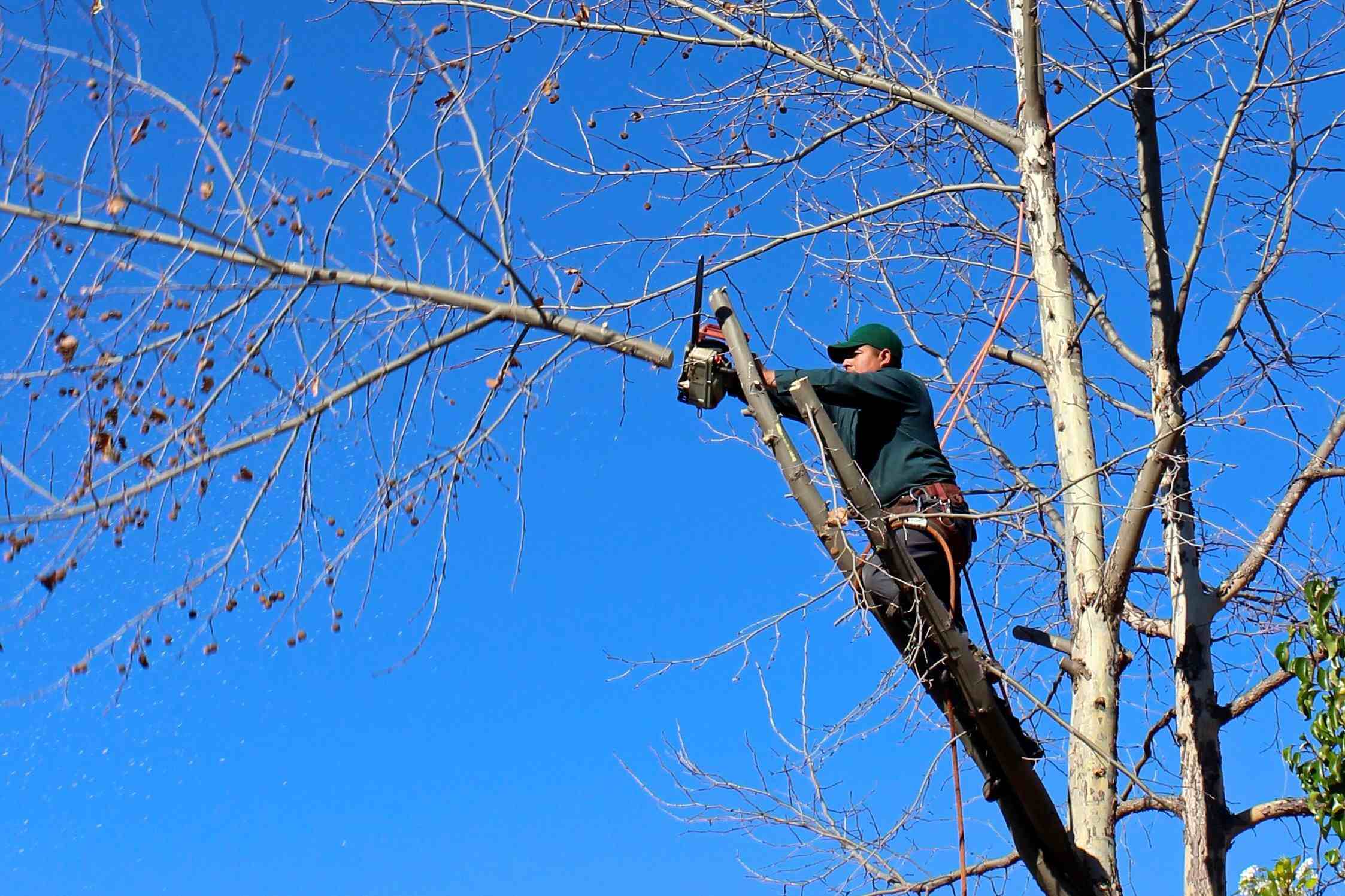 Directional Pruning - Prune trees to eliminate branches that will grow toward and into power lines, leaving behind select branches that grow away from power lines. The branch collar is left intact. All trimming cuts shall be made to direct future growth and sprouting away from conductors; maintaining the health of the tree while establishing acceptable clearance between lines and branches.
Directional Pruning - Prune trees to eliminate branches that will grow toward and into power lines, leaving behind select branches that grow away from power lines. The branch collar is left intact. All trimming cuts shall be made to direct future growth and sprouting away from conductors; maintaining the health of the tree while establishing acceptable clearance between lines and branches.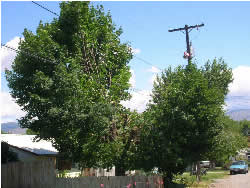 Drop-Crotch Trimming – a technique that removes a limb back to another limb or the tree's stem within the crown. The goal is to thin unwanted growth. Minimal drop-crotch trimming should be practiced on deciduous trees that are subject to excessive or rapid regrowth or sun-scald. When trimming conifers to the side of facilities, limbs should be cut back to the stem instead of tipping the ends of the branches.
Drop-Crotch Trimming – a technique that removes a limb back to another limb or the tree's stem within the crown. The goal is to thin unwanted growth. Minimal drop-crotch trimming should be practiced on deciduous trees that are subject to excessive or rapid regrowth or sun-scald. When trimming conifers to the side of facilities, limbs should be cut back to the stem instead of tipping the ends of the branches.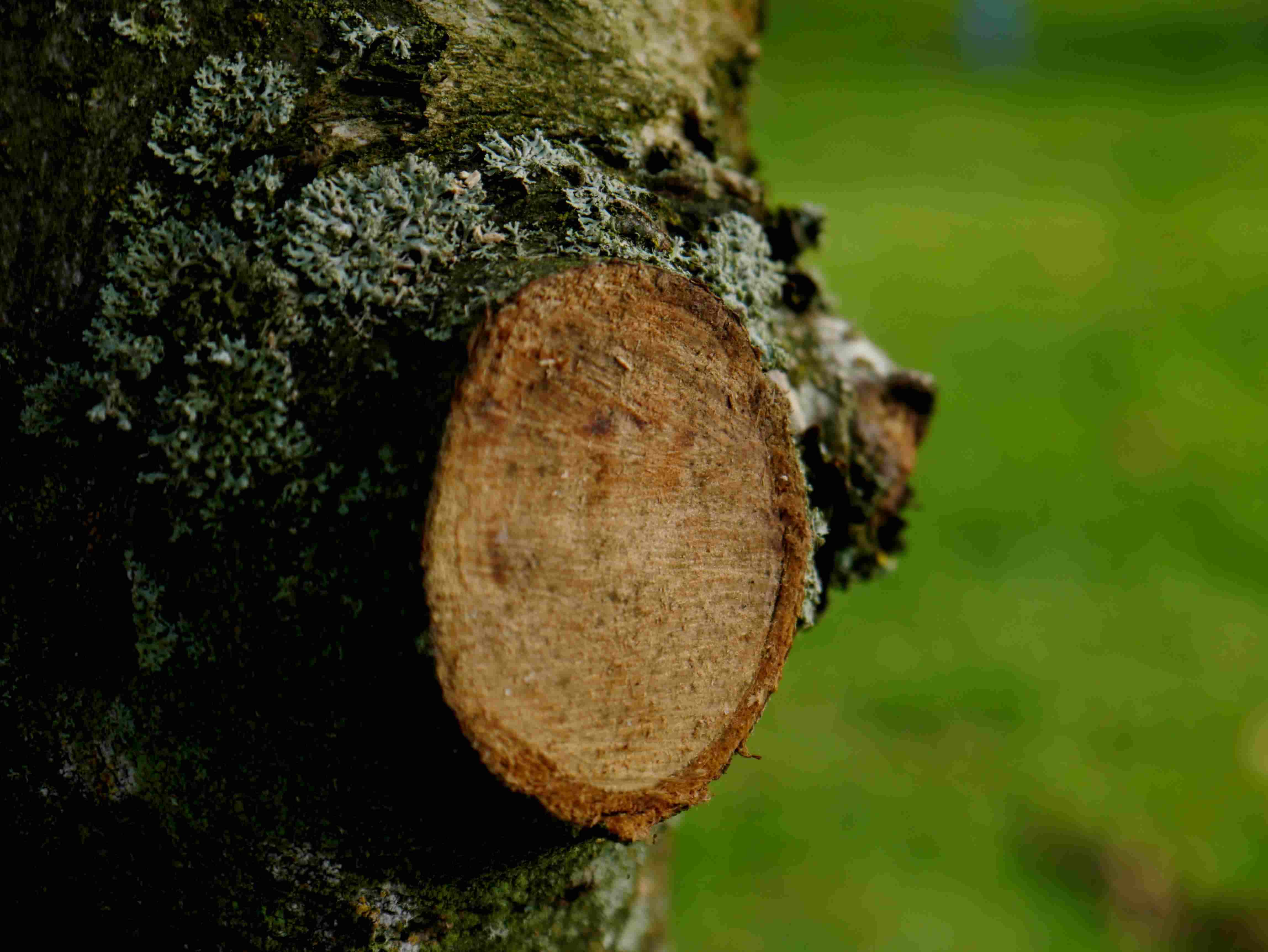 Collar cut – cutting of the limb just beyond the point of intersection with the trunk of the tree or another limb at the branch collar. When properly made, it will allow the tree's protective zone to aid in closing the wound. Topping, flush cuts, or branch tipping shall not be practiced. Lateral limbs that are left will be at least one-third the size of the limb being cut.
Collar cut – cutting of the limb just beyond the point of intersection with the trunk of the tree or another limb at the branch collar. When properly made, it will allow the tree's protective zone to aid in closing the wound. Topping, flush cuts, or branch tipping shall not be practiced. Lateral limbs that are left will be at least one-third the size of the limb being cut.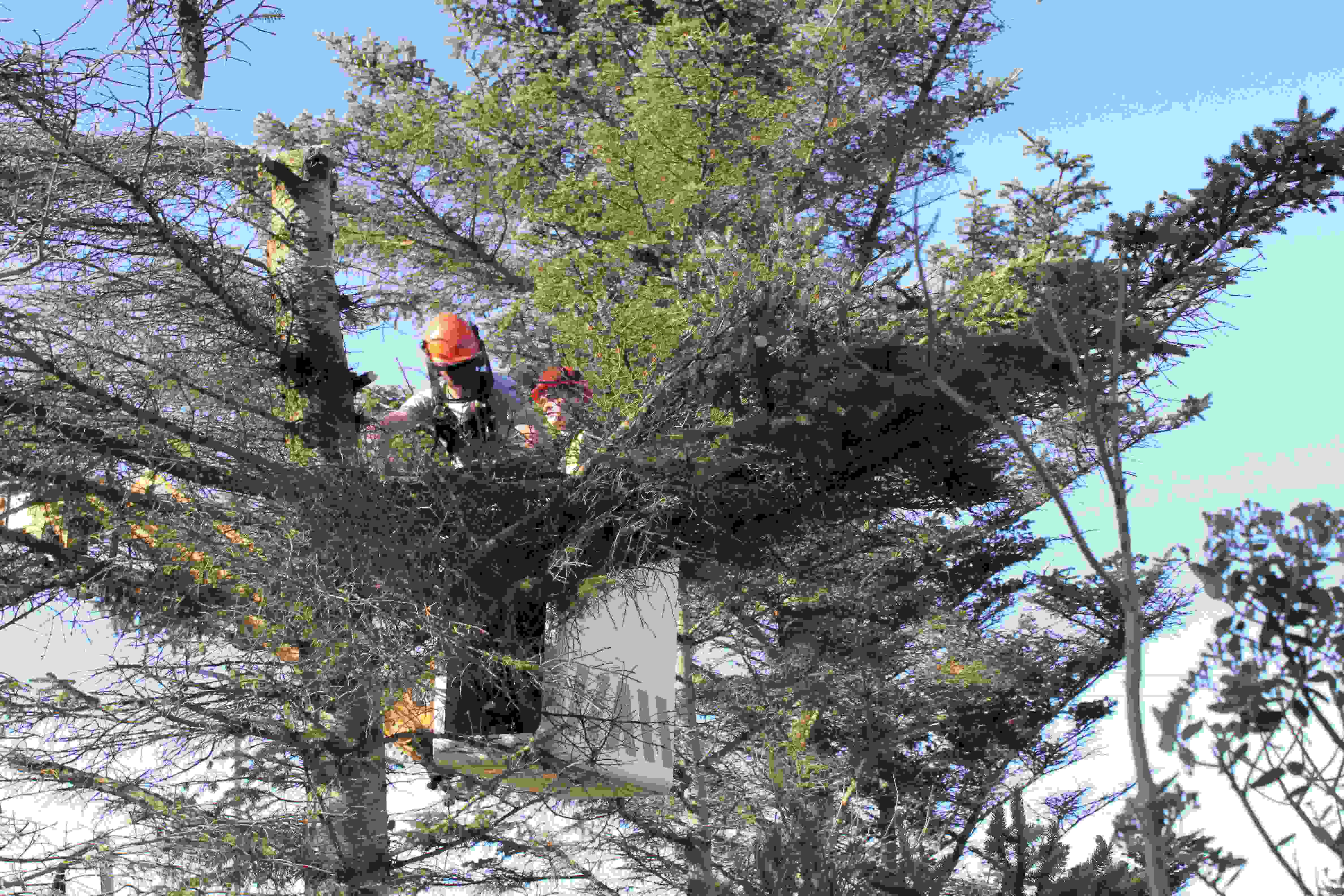 Incorrect Methods - Shaping and Pollarding. Shaping refers to the incorrect action of pruning or tipping a tree and its branches for aesthetic or ornamental appeal only. Shaped trees re-grow quickly with vertical suckers that sprout from cut ends. The suckers are only weakly attached to the branches. This practice has been determined detrimental to overall tree health. Pollarding is the practice of pruning trees annually to remove all new growth creating an unnatural effect.
Incorrect Methods - Shaping and Pollarding. Shaping refers to the incorrect action of pruning or tipping a tree and its branches for aesthetic or ornamental appeal only. Shaped trees re-grow quickly with vertical suckers that sprout from cut ends. The suckers are only weakly attached to the branches. This practice has been determined detrimental to overall tree health. Pollarding is the practice of pruning trees annually to remove all new growth creating an unnatural effect.- Tree Replacement Program
The Okanogan County PUD routinely trims trees throughout its service area that are near overhead lines or pad-mounted underground equipment. Tree trimming is temporary and expensive; therefore, removal of undesirable trees is an important part of the Okanogan County PUD’s overall tree maintenance program. Right-of-way/easement maintenance and tree removal eliminates hazardous conditions, improves access to facilities, and reduces future costs and potential outages. Selective tree removal will be pursued whenever feasible. Generally, no tree will be removed without the landowner’s permission.
Tree replacement/removal will be decided on a case by case basis.
Tree Removal Candidates
- Trees located at homes, schools, parks, businesses, or other areas, which children may climb easily that are near overhead conductors.
- Fast growing trees that interfere with overhead conductors.
- Trees not presently interfering with overhead conductors, but will at their mature height.
- Dead, dying, diseased, and unstable trees which have the probability of falling and contacting overhead conductors.
- Trees that require extensive trimming.
- Trees or bushes that impede access to pad-mounted underground equipment.
Guidelines for Tree Replacement Program
- Landowner will be refunded a maximum of $100 per replacement tree.
- One time replacement cost per tree.
- Rebate based on actual costs for replacement trees.
- Rebate will not include any costs incurred for planting the replacement tree(s) or upkeep.
- Stump grinding is not included in the removal job unless approved by PUD.
- Landowners have 1 year from date of removal to request tree replacement rebate.
- ONLY trees removed under the authority of the PUD qualify for replacement.
Replacement Tree Planting Guidelines
If replacement trees are planted near overhead or underground lines, the following guidelines must be met:
- The tree must be on the Okanogan County PUD Approved Tree List, unless the landowner has received pre-approval from the PUD for the non-listed tree.
- For pre-approval, the landowner must supply the PUD with information regarding the tree’s expected size, growth habits, and where it will be planted.
- The tree must be planted to avoid future interference with PUD overhead/underground lines and equipment.
- No replacement tree will be planted under overhead power lines or within 15 feet from its centerline unless approved by the PUD.
- Replacement trees should be planted no closer than 10 feet to underground equipment such as transformers.
For a complete listing of tree planting guidelines please visit the Arbor Day Foundation or contact a local nursery.
To see a list of approved replacement trees, please read our Approved Tree List.
Trees to Avoid
Larger trees are not recommended for planting near utility lines or on small lots. Reasons vary but include consistent limb loss in storms, excessive level of growth, a history of breaking pavements, suckers, excess or messy seed or fruit drop. A few are suitable for rural settings when the tree is far removed from utility lines and buildings.
Requesting a Rebate
To request a rebate for a replacement tree, the landowner must first meet the requirements for planting the replacement tree.
Download and fill out a Rebate Request Form with the following attached:
1. A copy of the receipt listing the species of the tree purchased and the name of the nursery from which the tree was purchased.
2. The total cost of the tree.Upon receiving the request, the Okanogan PUD will verify the form was signed and that the species of the tree and planting location are acceptable. Once these conditions have been verified, a refund check will be issued to the landowner.